Make your own willow bird feeder
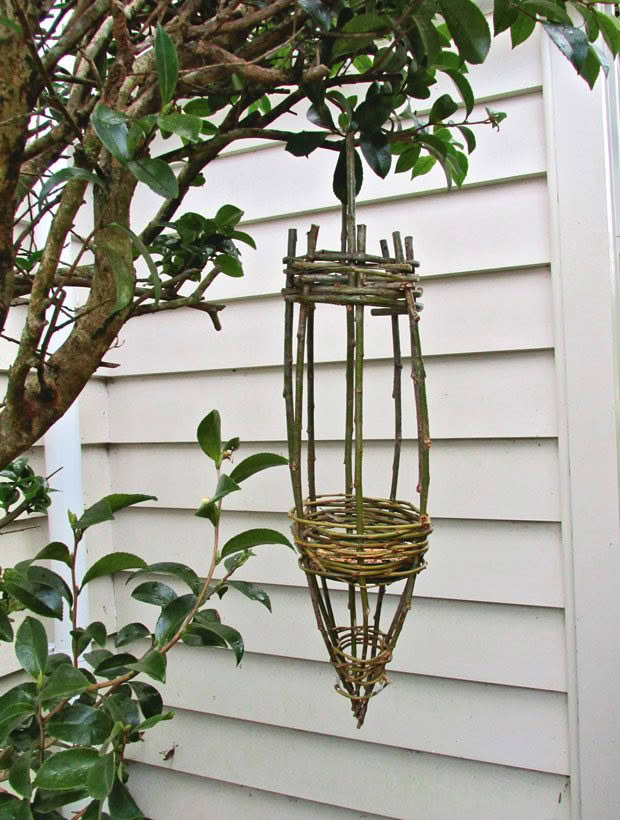
Learn the art of basic willow weaving and give your local birds a tasty treat with our beginner’s project.
Willow stems are harvested in winter after the leaves have fallen. You’ll need to harvest both thick and thin stems. The thicker stems will be the framework of the bird feeder, and the thinner, more flexible stems will be used for weaving.
If you buy dry willow stems, you will need to soak the willow in water for a couple of days to give it the flexibility you need to work it. Green willow does not need soaking.
We harvested and used our stems straight away.
If you don’t have willow, you can use any bendy material: dogwood, grapevine, lilac, wisteria, Virginia creeper, potato vine, etc.
YOU NEED:
fresh cut willow stems (or other bendy stems)
scrap wood
electric drill with 10mm bit
wood glue
pencil
string or bottle cap
plant saucer
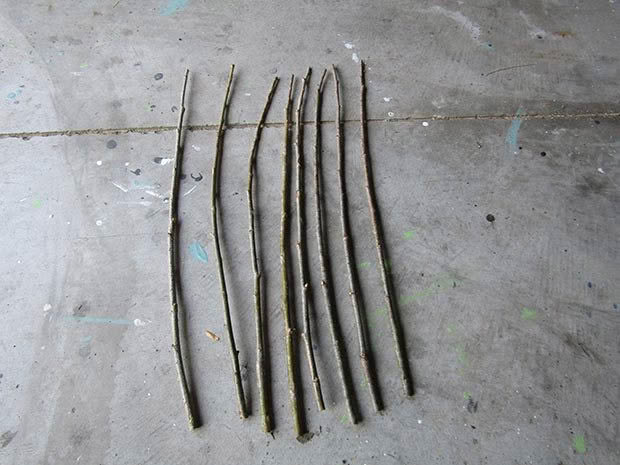
Step 1
Cut 9 x 550mm lengths of willow approximately 7mm in diameter, however you can use any number and make them any size, just make sure it is an uneven number.
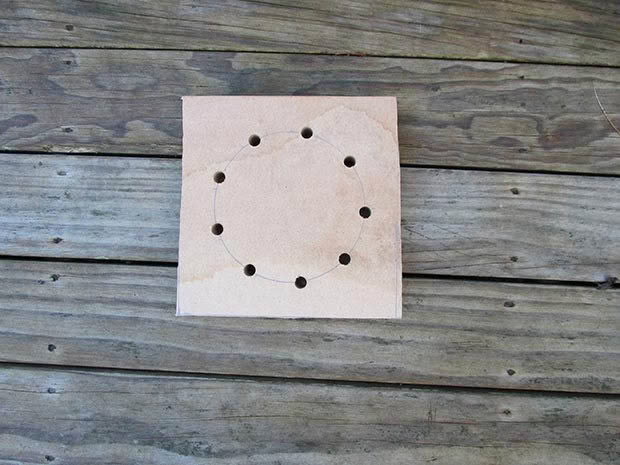
Step 2
Cut a piece of scrap wood about 180mm x 180mm. Draw a circle onto the wood then drill 9 x 10mm holes around the circle at an equal distance apart.
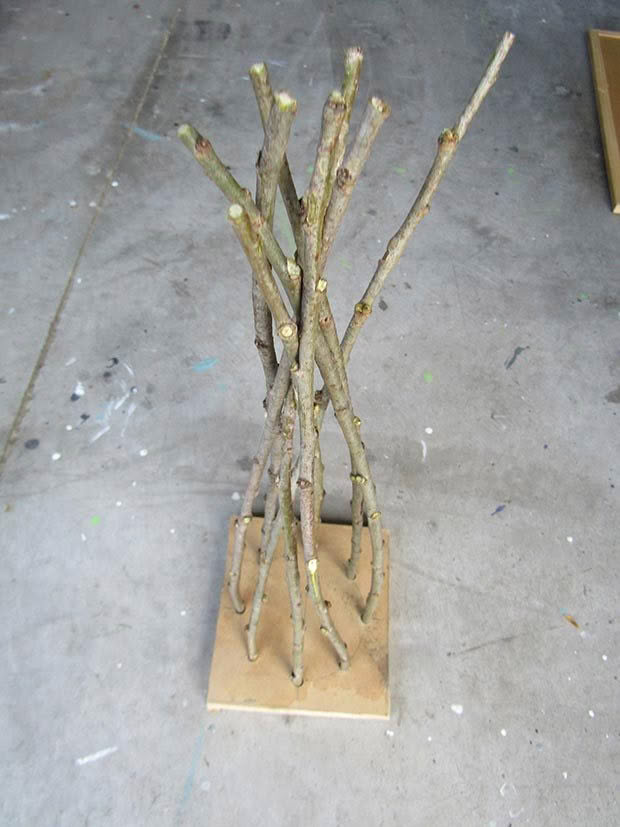
Step 3
Insert the bottom of the sticks into the holes. This will be the top end of the bird feeder.

Step 4
Insert a plant pot saucer in between the upright willow supports, as shown. Then pull together the top of the sticks and hold them together with a bottle cap, or you can use string.
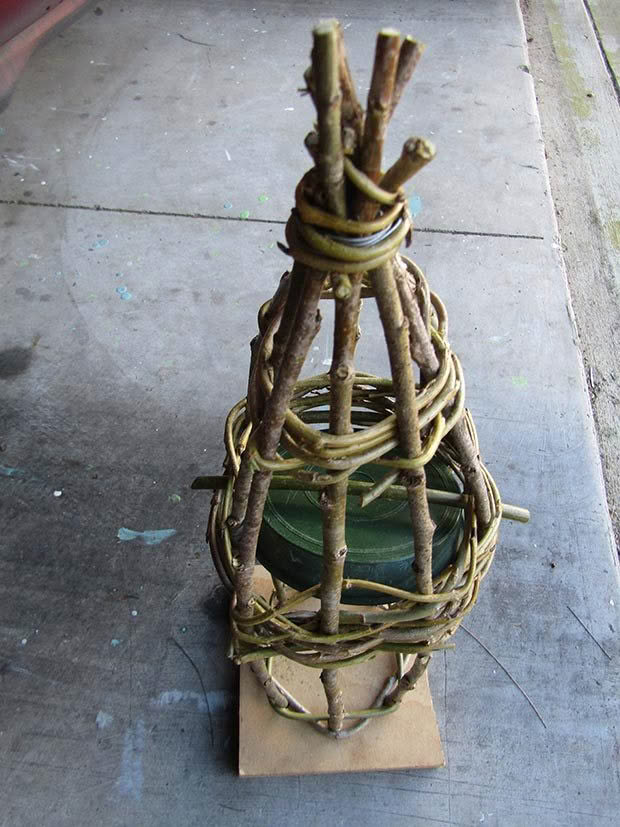
Step 5
Using thinner pieces of willow, weave three ‘bands’, weaving in and out of the framework and tucking in the ends as you go. Continue weaving until you are satisfied with the look. When weaving around the saucer (the middle band), do not make the band too high or the birds will not be able to reach in for the food. Remove the cap and weave around the top end.
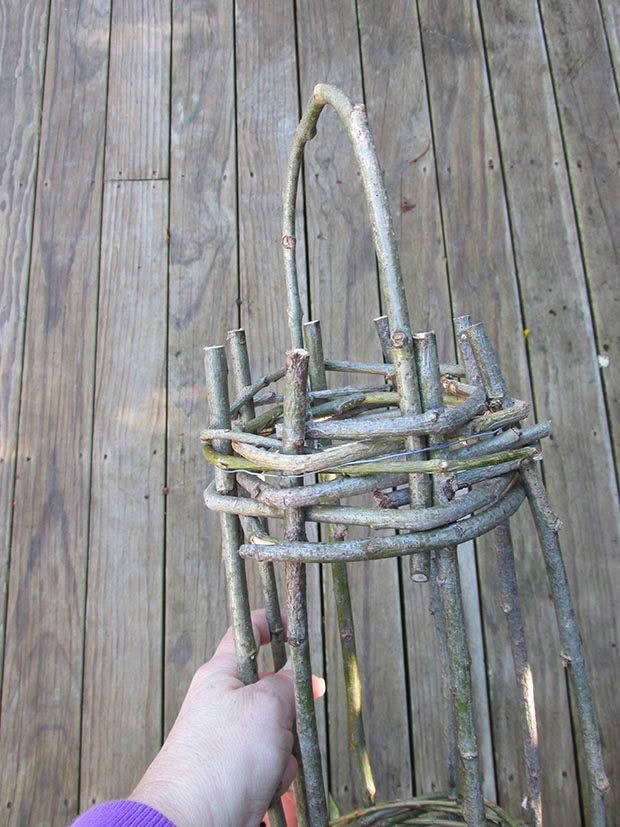
Step 6
Cut a thicker piece of willow about 450mm long and weave the two ends in between the woven band at the top of the feeder. This should be secure enough, but if not, secure with wire or use wood glue.
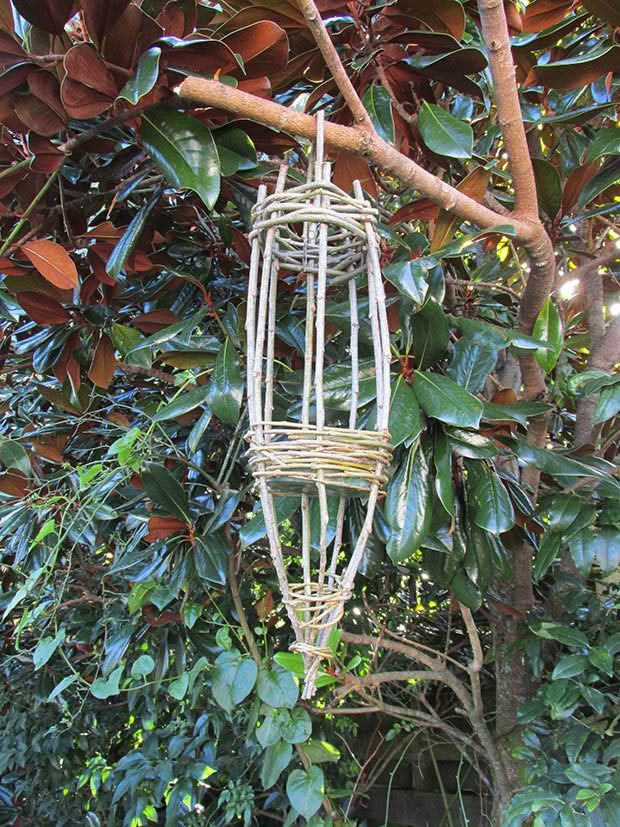
Love this story? Subscribe now!
 This article first appeared in NZ Life & Leisure Magazine.
This article first appeared in NZ Life & Leisure Magazine.
